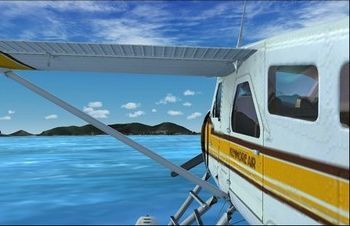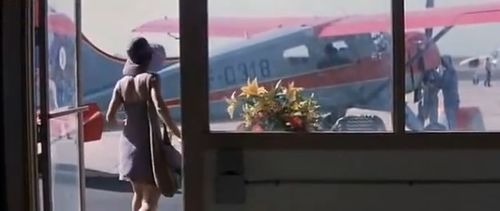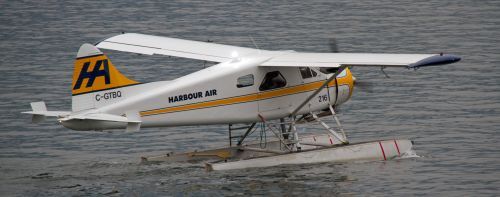
Publisher:
Bonnie King
CONTACT:
Newsroom@Salem-news.com
Advertising:
Adsales@Salem-news.com

~Truth~
~Justice~
~Peace~
TJP
Dec-13-2013 14:26

 TweetFollow @OregonNews
TweetFollow @OregonNews
Overture
Bill Annett Salem-News.comHow Suite It Is: The Little Airplane That could
 fstipsandaddons.com |
(DAYTONA BEACH) - It was January, 1989. I was sitting at a table in Vancouver's Hot Jazz Society, nursing a pint of Finian's Red, listening to Jimmy Armstrong render "Si Tu Vois Ma Mere," while Gerry Green supplied the clarinet wall paper. Minding my own business, you might say. And I was approached by a dishy femme du monde with a request for a light. Rather pushy, I thought, since I was sitting under a No Smoking sign. She was wearing a skunk-dyed sable and she had a sable-dyed skunk on a leash.

Strike that. I proselytized that last line from S.J. Perelman's Memoirs, just to get your attention.
Still, she was evocative enough; upswept, and yet of the earth, earthy. I lost no time in ordering a second straw and proffering my Finian's Red. Then, judging that the moment was right, as they say in the male-enhancement ads, I made my move.
"Come fly with me."
"You mean, like 'down to Acapulco Bay,' as in Sinatra?"
"No. Nanaimo."
"What's a Nanaimo? Is that like Nanaimo bars?"
"It's a town, or habitation, on Vancouver Island, known widely for its coal loading docks and its world-class Bath Tub Race."
Intrigued, of course, she became immediately compliant. Especially when I told her I was working on an assignment for Reader's Digest, and had an unlimited expense account, witness the Finian's Red. One thing led to another, and after breakfast the following day we repaired to an office and dock on Vancouver's inner harbor occupied by Harbor Air, a float-equipped tertiary airline, owner of the coveted Vancouver-Nanaimo franchise. Floating nearby was a beautiful (pontoon-equipped, naturally) airplane known to me, although not yet to my companion, as a DeHavilland DHC-2 Beaver.
We were shortly in the final boarding process, tripping carefully over the pontoons, and joined by an airplane driver wearing a plastic flying jacket and a Yankees ball cap. Without preamble, he revved up and executed an amazing STOL maneuver (the Beaver, not him) and we were suddenly airborne over the Lion's Gate Bridge, outbound toward Nanaimo.
My companion turned to me, tentatively fingering a barf bag. "And what is this assignment you're researching?"
"We're sitting in it."
And so it came to pass that I was off, in more ways than one, on the wildest adventure of my bucolic career, going on to write that Beaver story, which the Reader's Digest published in their Canadian edition in October of that year under the title "The Little Plane that Could." The DHC-2 Beaver was an incredible airplane, and the more I looked into its story, the more it became a labor of love.
As for the lady of my story? As in the well-known ballad of the Forties: "My old flame? I can't even think of her name."
_____
How Suite It Is:
The Little Airplane That could
 impdb.org |
Harrison Ford starred, along with Anne Heche, in a so-so movie called, apparently for want of something better, "Six Days and Seven Nights," which didn't win any Academy Awards. In the process, he became acquainted with - because he had to fly the bloody thing - the DeHavilland DHC-2 Beaver, a high-wing monoplane that had been quietly making history since 1947.
In the picture, Heche is a vacationing New York magazine editor and Ford is a grumpy, disillusioned and generally pissed-off freelance pilot in Tahiti or someplace, and together they manage to prang on a deserted island. The following 100 minutes is devoted to the dramatic tension concerning (a) whether they'll be rescued, (b) whether they will escape the machinations of a group of nasty tourist pirates, and (c) to what extent their initial enmity will mollify under the tropical skies and/or will they end up in flagrante delictu, what with the lapping South Pacific waves still untouched by Fukushima, and notwithstanding softly twanging ukeleles. All of which inevitably come to pass, but tentatively, prior to the final cut.
But the airplane is the thing, at least for our purposes. And Ford was so impressed with the DHC-2 that he went out and bought one. I should mentioned that a rebuilt, reconfigured and upgraded DeHavilland Beaver runs anywhere between three hundred big ones and half a million bucks, and that Harrison Ford is a bigger airplane buff than John Travolta or Clint Eastwood, owning 16 airplanes, ranging from a Bell helicopter to a twin-engined Gulfstream. The Beaver, Harrison has confessed on several occasions, is his favorite in this aeronautical harem. And well might it be. Here's the story.
Just after World War II, DeHavilland, initially a British company that Canadianized, turned its attention from military contracts to the civilian market. In Canada, not counting the major airline (single case), that meant the bush-flying market, obviously. If you look at that red blob on Mercator's projection, you'll note that anywhere south of Great Slave Lake, in a narrow band along the famous undefended frontier, the vehicle of choice has morphed since Confederation from the travois, through the farm wagon to knock-offs from Detroit's Big Three, equipped with plug-in block heaters.
DeHavilland was quick to secure the services of Punch Dickens, the dean of Canadian bush pilots, as Sales Director. Punch embarked on on-the-spot research among his former cohorts, assembling a profile of what the ideal northern airplane should look like and, more importantly, act like.
The consensus provided these specs: the first two were, hands-down, excessive power to enable STOL performance (short take off and landing) and the capability of alternating wheeled undercarriage with skis or floats (since the terrain from Edmonton to the North Pole is composed of hard ground, snow and stretches of water.) When DeHavilland engineers noted that these cumbersome options would seriously compromise cruise capability, one grizzled veteran responded: "You only need to be faster than a dog sled."
The bush pilots' shopping list continued: the ideal bush airplane should have wide cargo doors on both sides of the fuselage for docking right or left, big enough to accomodate a 45-gallon oil drum, and the fuselage should be all-metal, steel and aluminum, rather than the older wood-frame and doped fabric construction.
Because of its heritage, DeHavilland first considered a British engine, of which the lmited power suggested greater wing surface. Fortune smiled when Pratt & Whitney Canada proposed its wartime 450 horsepower Wasp Jr. engine. The combination of enhanced engine power and the initial long wing design provided the STOL performance that has ensured the Beaver's incredibly versatile history ever since.
 archaeologynewsnetwork.blogspot.com |
Rolled out in 1948, the DHC-2 has had an unbelievable record, not only as the work horse of Canada's north, but in a wide range of venues around the world. Now 65 years later, rebuilt, reconfigured and upgraded as to technology and refinements, the Beaver is in demand by airplane buffs like Harrison Ford, by the military as observation planes and as a standby in foreign fields that require its rugged, versatile construction.
As early as 1949, the U.S. Army started looking at the DHC-2 as a utility aircraft. Outperforming the Army's until-then standard Cessna 195, the Beaver served on active duty in Korea and ever since. With publicity like that, the rest of the world took note and international orders poured in. By the time construction of the original Beaver prototype was shut down in 1967, 1,700 had been produced at the Downsview Plant in Ontario.
In 1987, the Canadian Engineering Centennial Board named the DeHavilland Beaver as one of the top ten Canadian engineering achievements of the 20th Century. That included such marvels as the Toronto City Hall design and the CBC logo. And in 1999 the Royal Canadian Mint commemorated the Beaver on it s minted quarter that year.
Of the hundreds of Beaver aircraft bought by the U.S. Army, nine are still in service with the USAF Auxiliary. A Royal New Zealand Air Force Beaver accompanied Sir Edmund Hillary's expedition to the South Pole. Beavers are used for crop dusting and for parachutists and other nutcases who jump out of airplanes, because of their high rate of climb. The British Army used them both in the Falklands altercation and to put down unruly Irishmen during that unpleasantness. The DHC-2 is popular with air charter companies, police forces and as air taxis. Both the RCMP in Canada and the Finnish Border Guard operate Beavers, in both cases devoted to keeping Russians out.
Kenmore Air in Washington State and Viking Air of Victoria, B.C. both recondition and build new Beavers, now embellished with the latest technology and turboprop engines.
The DeHavilland Beaver is flying today, in more than 25 countries serving, usually in air forces, including those of Argentina, Austria, Burma, Cambodia, Chile, Colombia, Cuba, Vietnam, Thailand, Greece, Ghana, Haiti, Indonesia, Iran, Turkey, Uganda Yugoslavia and Zambia.
Epilogue
Harbor Air is still flying DeHavilland Beavers out of Vancouver's inner harbor. And today my son and daughter-in-law live in Nanaimo, although they have little to do with coal loading docks or the Annual Bath Tub Race. I don't contemplate visiting Vancouver in the near future, but if and when I do, of course I'll travel on to Nanaimo. And you needn't ask how I'll get there.
As for the lady who figured in my introduction, I have no way of knowing how or where she is today. But I hope and trust that she's in as good shape as the DeHavilland Beaver that flew us to Nanaimo so many years ago.

Bill Annett grew up a writing brat; his father, Ross Annett, at a time when Scott Fitzgerald and P.G. Wodehouse were regular contributors, wrote the longest series of short stories in the Saturday Evening Post's history, with the sole exception of the unsinkable Tugboat Annie.
At 18, Bill's first short story was included in the anthology “Canadian Short Stories.” Alarmed, his father enrolled Bill in law school in Manitoba to ensure his going straight. For a time, it worked, although Bill did an arabesque into an English major, followed, logically, by corporation finance, investment banking and business administration at NYU and the Wharton School. He added G.I. education in the Army's CID at Fort Dix, New Jersey during the Korean altercation.
He also contributed to The American Banker and Venture in New York, INC. in Boston, the International Mining Journal in London, Hong Kong Business, Financial Times and Financial Post in Toronto.
Bill has written six books, including a page-turner on mutual funds, a send-up on the securities industry, three corporate histories and a novel, the latter no doubt inspired by his current occupation in Daytona Beach as a law-abiding beach comber.
You can write to Bill Annett at this address: bilko23@gmail.com
 |
 |
 |
Articles for December 12, 2013 | Articles for December 13, 2013 | Articles for December 14, 2013



googlec507860f6901db00.html

Salem-News.com:
Terms of Service | Privacy Policy
All comments and messages are approved by people and self promotional links or unacceptable comments are denied.
[Return to Top]
©2025 Salem-News.com. All opinions expressed in this article are those of the author and do not necessarily reflect those of Salem-News.com.